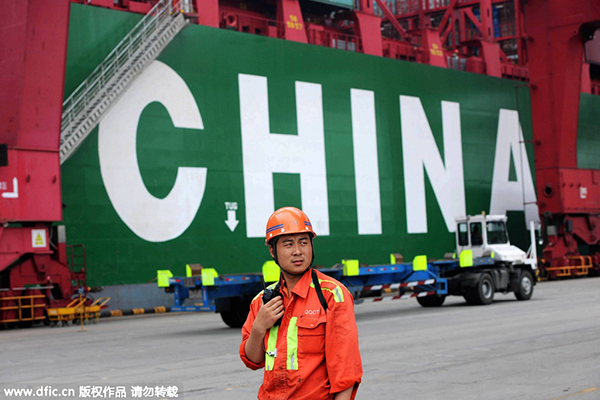 |
|
A stevedore works at Qingdao port in Shandong province, July 1, 2015. [Photo/IC] |
The first month of 2016 witnessed the Chinese stock market in panic selling mode and the RMB depreciating unexpectedly against the greenback. China's GDP growth in 2015 also hit a 25-year low.
There seems to be a new surge of predictions about the "coming collapse of the Chinese economy and the end of the Chinese model". However, looking back at China's development journey from the late 1970s up to today, many pessimistic predictions, especially forecasting the "China breakdown", have been proved wrong.
In 1996, Lester Brown, an American agricultural economist predicted that China would not be able to feed its large and fast-growing population and economic reforms would lead to malnutrition and hunger.
In the late 1980s and early 1990s, many Chinese pessimists predicted that economic reform without political reform would lead to a total collapse of China. In the Asian Financial Crisis of 1997-98 and the World Financial Crisis of 2007-08, many Chinese pessimists predicted that the Chinese model would not be able to sustain those drastic external shocks.
All those predictions were wrong. Since 2012, China has changed its economic development strategy from export and foreign direct investment driven to endogenous growth which emphasizes internal structural change, innovation and industrial upgrading to escape the so-called middle income trap.
In doing so, China has to eliminate excess industrial production capacity of steel, coal and other environmentally polluting products, and to promote high-end manufacturing, services, urbanization and rural modernization.
Economic slowdown is an inevitable outcome of the new development strategy, but given the tough external economic environment and surging domestic factor costs, China's growth of 6.9% in 2015 was still the best among the world's 10 largest economies except India. In particular, while the Russian and Brazilian economies are contracting sharply, and while many other developed economies are still struggling to move out of their own crisis, China continues to be a potent engine of growth for the global economy.